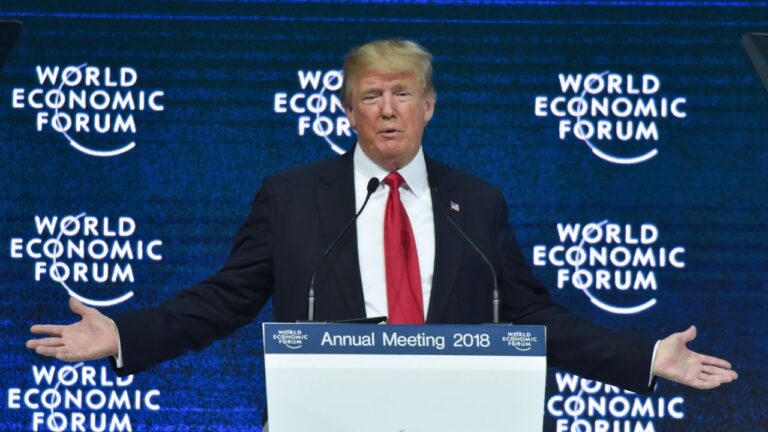In a fiery address at the 2025 World Economic Forum in Davos, Switzerland, U.S. President Donald Trump doubled down on his commitment to reshaping global trade dynamics and transforming the United States into a “manufacturing superpower.” Speaking virtually, Trump announced sweeping policies aimed at incentivizing domestic production, reducing trade deficits, and pushing allies to shoulder more defense spending.
Key Highlights from Trump’s Address:
- Tariff-Driven Manufacturing Strategy: Trump urged global businesses to shift production to the U.S. or face tariffs. By offering competitive tax rates to domestic manufacturers—proposing a reduction from 21% to 15%—Trump aims to reinvigorate the American industrial landscape.“Come make your product in America, and we will give you among the lowest taxes of any nation,” said Trump.
- Balancing Trade Deficits: Trump criticized trade imbalances with China, the European Union, and other Asian countries, calling for “fairness” and “a level playing field.” He referenced the staggering $1.1 trillion trade deficit with China as an issue that must be resolved.
- NATO Defense Spending: Reinforcing his “America First” stance, Trump demanded NATO allies increase their defense spending to 5% of GDP, up from the current 2% guideline.
- Energy and Economic Relief: Trump proposed leveraging the Organization of the Petroleum Exporting Countries (OPEC) to lower oil prices, suggesting it would lead to an end to the war in Ukraine. He also called for global reductions in interest rates, highlighting the interconnectedness of oil prices, conflict, and economic stability.
- Denuclearization and Diplomacy: Trump expressed his intent to work with Russian President Vladimir Putin and China on nuclear arms reduction, describing the initiative as “unbelievable for the planet.” He emphasized the potential for a multilateral effort to minimize nuclear weapons globally.
- Focus on Innovation: Trump declared the U.S. the “world capital of artificial intelligence and cryptocurrency,” signing executive orders to boost AI innovation and protect crypto companies. These steps aim to cement the U.S.’s leadership in emerging technologies.
Potential Global Impacts
Trump’s policies, while ambitious, carry significant global implications. The tariff-focused manufacturing strategy may strain trade relationships with key partners like China and the EU, while increased NATO defense spending could create fiscal challenges for member nations. Meanwhile, the push for lower oil prices could pressure OPEC but might face resistance from major producers.
On the domestic front, the reduction in corporate tax rates could incentivize companies to invest in U.S. manufacturing, potentially creating jobs and boosting the economy. However, the policy’s success hinges on the ability to navigate geopolitical tensions and maintain stable international relations.
Trump’s vision to transform the U.S. into an industrial and technological leader aligns with his broader “America First” agenda. By targeting trade deficits, incentivizing innovation, and strengthening defense alliances, his administration seeks to shape a new era of American dominance on the global stage.
Also Trump to Impose New Tariffs on Major Trading Partners
For further details, clarification, contributions or any concerns regarding this article, please feel free to reach out to us at editorial@tax.news. We value your feedback and are committed to providing accurate and timely information. Please note that all inquiries will be handled in accordance with our privacy policy.



